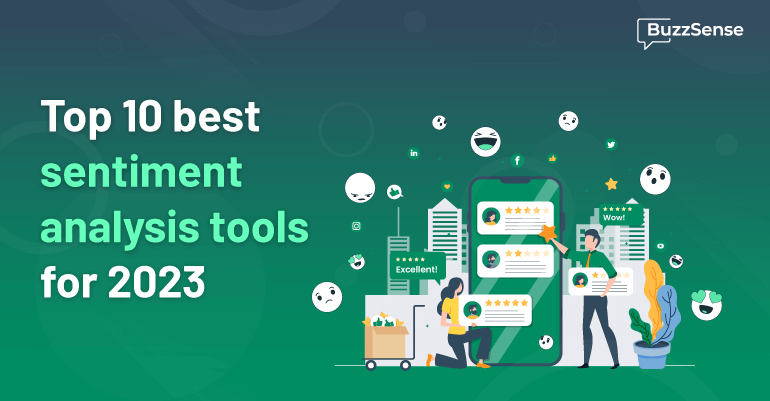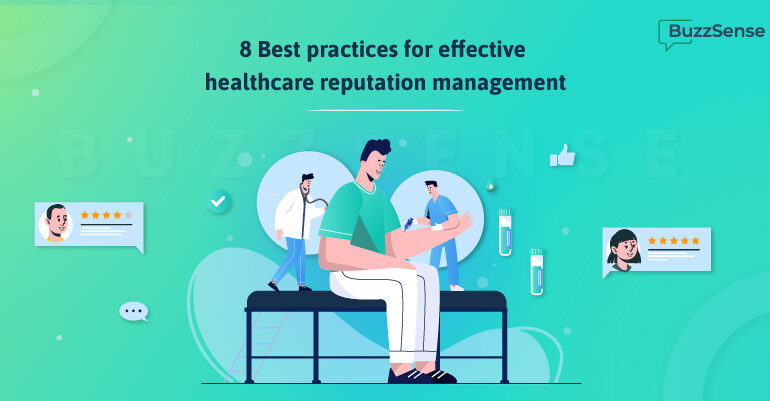Instagram is a social network with 1.3 billion global users. Interestingly, that’s too many eyes on your brand. As you grow the brand following, conducting Instagram sentiment analysis becomes consequential in understanding customers and providing an enriched customer experience.
Handling customer requests or analyzing your online brand reputation, sentiment analysis allows you to track customers’ positive, negative or neutral opinions. Adopting a sentiment analysis and social listening tool can help you have a focused social media strategy to improve negative sentiments and amplify positive emotions.
In this blog, let’s dive into online sentiment analysis for your Instagram business account.
What is online sentiment analysis?
Online Sentiment Analysis is a powerful practice for monitoring customer feelings about your brand, product, or services. With the help of sentiment analysis software, you can seamlessly analyze multiple social media posts, comments, user-generated content, branding hashtags, direct messages, mentions, and stories to gauge brand reputation.
Sentiment analysis is technically referred to as opinion mining. A sentiment analysis tool uses Natural Language Processing (NLP) to determine the emotional state of any given text and later classify them into positive, negative, or neutral messages. You can also assign exact sentiments, such as excitement, happiness, disappointment, and dissatisfaction, to the text by defining a set of keywords associated with customer behavior.
While sentiment analysis tools are improving with advanced AI algorithms, they might not be 100% accurate. These tools often need help recognizing sarcasm, nuances, and slang. Give the algorithms time to understand the text patterns and defined rules to drive more accurate insights. Having sentiment analysis on Instagram is an efficient way to manage brand connections.
Why should brands perform sentiment analysis?
Emotion is an influential aspect behind a customer’s purchasing decision, understanding how customers feel about your brand can help you identify areas for improvement. Brands leverage sentiment analysis insights to make informed decisions. As a result, you can enhance customer satisfaction and loyalty.
Instagram is flourishing as the perfect channel to reach an enormous audience, and the platform also facilitates maintaining brand relationships with its customers.
People enjoy being connected with brands, and better yet, people show more trust toward the brand through mentions in their stories, reels, comments, and more feed interactions.
Brands use strategies like optimizing profile bio, creating intriguing reels and graphics, influencer marketing, and more to failproof their business growth on Instagram. Showcasing user-generated content is compelling social proof and a great crowd-pleaser to show your followers that you care.
Sharing moments of your products and services is a great way to provoke FOMO and drive brand awareness. Use Highlights to make stories stay forever. For example, Wendy’s, an American fast-food restaurant chain on Instagram, delivers high-engagement content, and their witty, fun responses make it even more trending. Brands make use of various Instagram features to make themselves stand out.

Sentiment analysis allows the brand to build a more profound connection with the customers and offer engaging content that will resonate with them.
However, there are more reasons for businesses to tap into a sentiment analysis for valuable insights on,
- Determining brand reputation
- Offering better customer service
- Analyzing business KPIs
- Determining the results of influencer campaigns
- Generating leads
- Boosting customer relations
- Improving content engagement
- Enhancing overall brand messaging
Limitations of sentiment analysis software
You might notice some potential roadblocks while using a sentiment analysis tool. Natural language processing can be complex as it is trained to analyze and understand emotions differently from the human brain.
Some roadblocks include tones, polarity, sarcasm, emojis, idioms, negations, and audio-visual data. Even though these are common challenges, they are possible to overcome with the right sentiment analysis software.
Sometimes, you can implement a topic-based sentiment analysis for more clarity over mid-polar phrases like “not so bad.” However, aspect-based sentiment analysis can give you a deeper understanding of the phrases and their context.
To tackle these challenges in your Instagram sentiment analysis, you can try out BuzzSense’s sentiment analysis software. The tool lets you break real-time audience sentiment and reports in a simplified dashboard.
BuzzSense’s AI is designed to understand multiple languages, aggregate data from social networks, and review platforms. It allows you to build your response automation to dive deep into customer insights.
How to conduct an Instagram sentiment analysis?
Now that we’ve covered online sentiment analysis and why brands use them, here are the six steps to run your Instagram sentiment analysis.
1. Understand your demographic
Audience demographics are critical in studying sentiment analysis metrics. A business account on Instagram offers insights that help you better understand your content, the engagement it brings to the table, and the followers who interact with your posts. Understanding your user locations and age groups can help represent content relevancy and deliver aesthetically pleasing visuals to connect with your followers. You can also curate your content plan based on each segment’s engagement level.
2. Identify your keywords and hashtags
With so many customers sharing their experiences and feelings about your products/services on Instagram every day. Consider what they search and post and the influencers they follow to understand what keywords and # hashtags to monitor. The keywords and branding hashtags should remain relevant to the audience over time.
3. Choose the right sentiment analysis tool
Sentiment analysis tools can vary significantly. It’s vital to compare the tool’s features, platform integrations, and pricing to align with your goals. Some even require a slight to deeper learning curve to get started. BuzzSense, Lexalytics, Mention, Brand24, and Sprout Social are valuable tools you can get started with right away. These tools are used by businesses, from startups to enterprises, who deal with massive followers and user-generated content.
4. Analyze your competitors
A brand must drive more positive sentiment than its competition. Consumers always compare products when buying them, and a more positive sentiment helps them inquire about your brand than your competition.
Keep track of your competitor posts and tailor your content to industry standards. Assess the potential crisis your competitors face, and if it affects the whole industry, your brand might also be affected.
5. Adapt your brand messaging
Instagram sentiment analysis’s primary goal is to understand your followers better to increase engagement and provide more transparency. You are still at risk if your brand messaging is not aligned with your sentiment analysis finding. Ensure all the content delivered is authentic and loved by your audience across the platform.
6. Handle the negative sentiments
You may encounter unhappy customers looking for an apology. Be prepared with a complex response strategy to deal with the crisis. It is important to respond promptly to people making negative posts/comments and apologize. Ignoring negative feedback and concerns will only worsen the matter or damage your brand reputation.
Conclusion
While Sentiment analysis can fuel your Instagram engagement, how you assess the data points can significantly vary depending on your brand and goals. Online sentiment analysis software lets you stay on top of customer feedback, outsmart the competition and grow your business faster.
So if you are interested in Instagram Sentiment Analysis, don’t hesitate to request a free BuzzSense trial! To see how we can redefine the reputation management for your brand.




